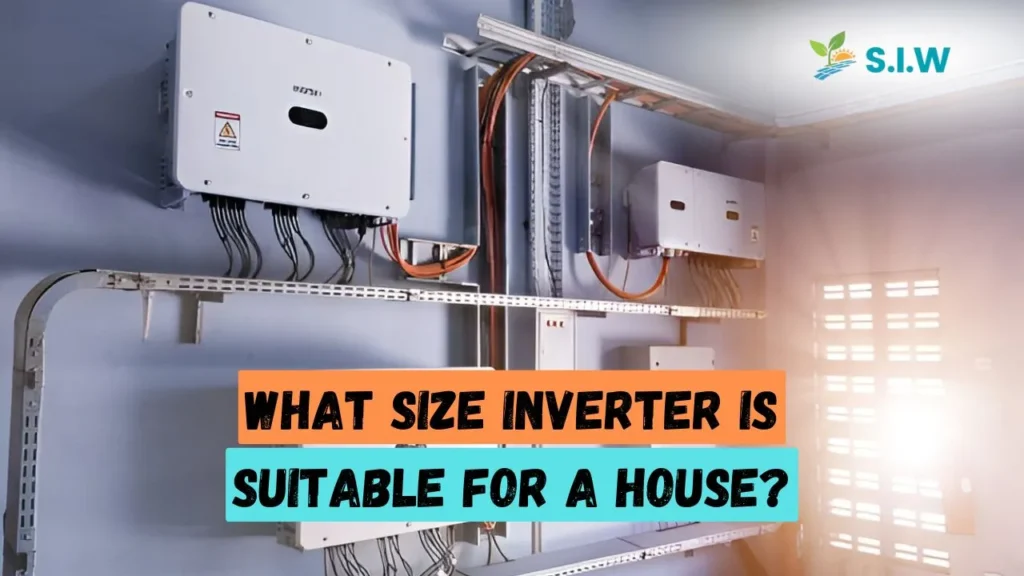Choosing the right inverter size for a house is essential to ensure the efficient conversion of DC electricity generated by solar panels into AC electricity used by most home appliances. This guide will help you determine the ideal inverter size for your specific needs based on your home’s energy consumption, system capacity, and appliance requirements.
Understanding Power Consumption
What Is an Inverter, and Why Is It Important?
An inverter plays a crucial role in converting the DC power stored in your solar battery or generated by your panels into usable AC power for home appliances. Without the right-sized inverter, your system might not be able to supply enough power or could be inefficient, leading to energy losses.
Calculate Your Household Power Needs
Before selecting an inverter, it’s critical to assess your household’s energy consumption. This can be done by calculating the total wattage of the devices you’ll be using. For example:
- Lighting: LED lights typically use between 10-20 watts per bulb.
- Refrigerators: Consume around 600-800 watts during operation but require a surge of power during startup (often up to 1200 watts).
- Air Conditioners: Depending on the size, AC units may require anywhere from 2000 to 5000 watts.
Summing up the total wattage, including the startup wattages for devices like refrigerators and air conditioners, is vital when sizing an inverter.
Types of Inverters
Inverters come in various sizes and types, designed to handle different loads and applications. The most common types include:
- Pure Sine Wave Inverters: Deliver clean power, ideal for sensitive electronics like laptops and TVs.
- Modified Sine Wave Inverters: Suitable for basic appliances but may not work well with all devices, especially those requiring a steady power supply.
Inverter Sizing Chart

From this table, we can see that larger appliances with motors require higher surge power. Always ensure your inverter can handle this surge, even if your regular load is lower.
How to Choose the Right Inverter Size
Step 1: Calculate Peak Power Needs
Identify the appliances you’ll run simultaneously. Let’s assume you want to run a refrigerator, a few lights, and an air conditioner. The total wattage might be around 2800 watts, but taking into account the surge power required, you might need an inverter that can handle 5700 watts of surge power.
Step 2: Choose the Inverter Based on System Capacity
Your inverter should also be matched to your solar panel and battery capacity. For instance, if you have a 5kW solar system, a 5kW inverter would be optimal. However, if your energy consumption is higher than your solar output, you may need to invest in a larger battery storage system or reduce your consumption.
Step 3: Consider Future Energy Needs
It’s always a good idea to plan for future energy consumption growth. If you anticipate adding more appliances to your home, such as an electric vehicle charger or more air conditioning units, choose an inverter that provides additional capacity.
Inverter Sizing for Different Home Setups
Small Households (1-2 Bedrooms)
For smaller homes with basic energy needs such as lighting, a refrigerator, and a few electronics, a 2kW inverter is often sufficient. This will cover the essential devices and provide some room for growth.
Medium Households (3-4 Bedrooms)
For homes with moderate energy use, including heavier appliances like air conditioners and washing machines, a 4kW to 5kW inverter is recommended. These inverters can handle the surge loads required by larger appliances while providing enough capacity for everyday use.
Large Households (5+ Bedrooms)
For larger homes with several high-consumption devices running simultaneously, consider a 7kW to 10kW inverter. This size ensures that even during peak demand, there will be enough power to run multiple appliances without overloading the system.
In The End
Choosing the right inverter size for your house depends on a clear understanding of your total and peak power needs, the capacity of your solar and battery systems, and potential future energy requirements. By following these steps and ensuring your inverter is properly sized, you can maximize the efficiency of your home’s solar power system and avoid overloading or underutilizing your equipment.
Always consult with a professional to ensure your inverter is compatible with your solar setup and household energy needs.








